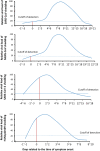The unique features of SARS-CoV-2 transmission: Comparison with SARS-CoV, MERS-CoV and 2009 H1N1 pandemic influenza virus
- PMID: 33350025
- PMCID: PMC7537046
- DOI: 10.1002/rmv.2171
The unique features of SARS-CoV-2 transmission: Comparison with SARS-CoV, MERS-CoV and 2009 H1N1 pandemic influenza virus
Abstract
From 2002 to 2019, three deadly human coronaviruses (hCoVs), severe acute respiratory syndrome coronavirus (SARS-CoV), Middle Eastern respiratory syndrome coronavirus (MERS-CoV) and severe acute respiratory syndrome coronavirus-2 (SARS-CoV-2) emerged to produce outbreaks of SARS, MERS and coronavirus disease 2019 (Covid-19), respectively. All three hCoVs are members of the Betacoronavirus genus in the subfamily Orthocoronavirinae and share many similarities in virology and epidemiology. However, the pattern and scale of Covid-19 global spread is similar to 2009 pandemic H1N1 influenza (H1N1pdm09), rather than SARS or MERS. Covid-19 exhibits high viral shedding in the upper respiratory tract at an early stage of infection, and has a high proportion of transmission competent individuals that are pre-symptomatic, asymptomatic and mildly symptomatic, characteristics seen in H1N1pdm09 but not in SARS or MERS. These two traits of Covid-19 and H1N1pdm09 result in reduced efficiency in identification of transmission sources by symptomatic screening and play important roles in their ability to spread unchecked to cause pandemics. To overcome these attributes of Covid-19 in community transmission, identifying the transmission source by testing for virus shedding and interrupting chains of transmission by social distancing and public masking are required.
Keywords: Covid-19; MERS; SARS; pandemic influenza; pre-symptomatic infection; viral shedding.
© 2020 John Wiley & Sons Ltd.
Conflict of interest statement
All the authors declare that there is no existing commercial or financial conflict of interest, in any way.
Figures

References
-
- WHO . Middle East respiratory syndrome coronavirus (MERS‐CoV) – Qatar 2020. https://www.who.int/csr/don/12-march-2020-mers-qatar/en/. Accessed 30 March 2020.
-
- WHO . Coronavirus disease 2019 (COVID‐19) situation report – 72 [Organization website]. https://www.who.int/docs/default-source/coronaviruse/situation-reports/2.... Accessed 30 July, 2020.
Publication types
MeSH terms
Grants and funding
LinkOut - more resources
Full Text Sources
Medical
Miscellaneous

